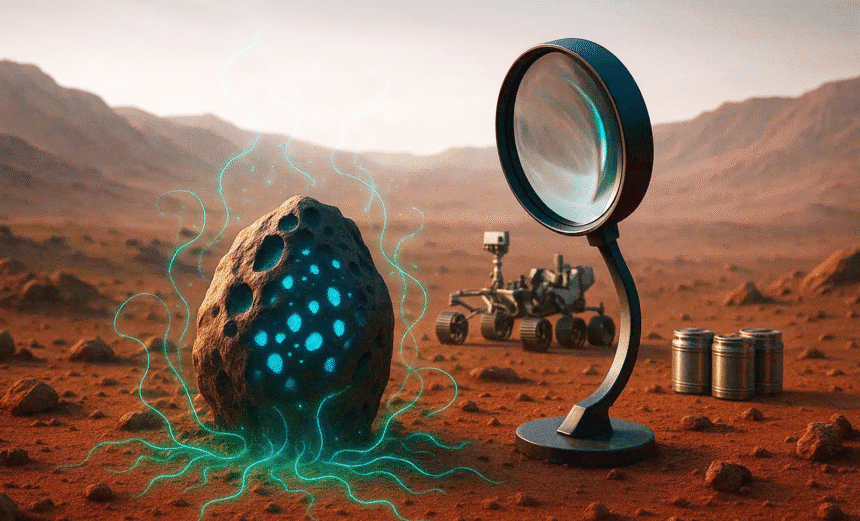NASA scientists have come out to say they may have probably stumbled upon the clearest signs yet of whether life once existed on Mars. Unusual leopard-spotted rocks discovered by the Perseverance Rover inside an ancient riverbed show chemical signs that would likely be linked to microbial activity. While the findings stop short of confirming life, they represent the strongest “potential biosignature” ever found on the Red Planet and have reignited the scientific debate about whether Mars was once alive or not.
After finding strange rocks inside a dried-up Martian riverbed, NASA has revealed what may be the most intriguing proof of ancient life on Mars so far. When the rover landed in the Jezero Crater in 2021, it discovered fine-grained mudstones with microscopic characteristics known as “poppy seeds” and “leopard spots.” According to scientists, these patterns seem to contain minerals produced by chemical reactions that are frequently fuelled by bacteria on earth. As a lead scientist on the Perseverance mission, Dr. Joel Hurowitz of Stony Brook University stated, “This seems like the most compelling potential biosignature detection that we’ve had to date.” He also added that “The chemistry in these rocks points to interactions between organic matter and mud at the bottom of an ancient lake.”
The mudstones, which are thought to be around 3.5 billion years old, were discovered in the Bright Angel Formation. Billions of years ago, this location had flowing water and a dense atmosphere, making Mars a good possibility for ancient life. The planet is now a freezing, sandy desert, but relics of a more humid age can still be found in its rocks.
On Earth, bacteria generally build comparable crystalline structures, leaving fossil-like chemical traces. NASA officials, however, urged caution. “We are not saying that we found life,” stressed Imperial College London Professor Sanjeev Gupta. “However, we discovered traits that, if observed on Earth, could be explained by biology. That makes this really fascinating.”
The results fulfil NASA’s criteria for a “potential biosignature,” indicating that they demand further research. However, scientists emphasise that non-biological reasons are still possible. Certain geological processes may possibly produce the same minerals, but they would require a high temperature. The rocks investigated so far show no signs of such terrible conditions. “The non-biological pathways are difficult to support, but we can’t rule them out completely,” said Hurowitz, the doctor.
The final test would be to return the Martian pebbles to Earth for a thorough scientific investigation. Perseverance has already begun collecting samples, sealing them in canisters, and storing them on the Martian surface for a future sample-return mission. However, the mission’s future is currently questionable. NASA and the European Space Agency’s projected cooperative activities could be cancelled as a result of severe cuts to the US States’ scientific budget for 2026.
Despite these difficulties, scientists’ excitement is overwhelming. “We need to see these samples back on Earth,” Professor Gupta insisted. “Only then will we know if what we’re looking at are the remnants of ancient microbial life or just the quirks of Martian geology.” For the time being, the leopard-spotted mudstones of Jezero Crater remain a cosmic mystery, containing secrets that might drastically change humanity’s understanding of life in the universe.


















